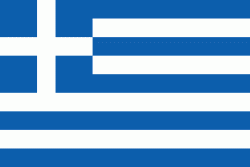Archaeological Museum of Thera (Archaeological Museum of Thera)
The Archaeological Museum of Thera is a museum in Fira, Santorini, Greece. It was built in 1960 to replace an older one which had collapsed by the 1956 Amorgos earthquake.
Its collection houses artifacts that begin from Proto-Cycladic marble figurines of the 3rd millennium BC, and continue on to the Classical period.
There are prehistoric vases from Akrotiri dated to the 20th-17th centuries BC.
Later artifacts include pottery and amphorae of Geometric and Archaic periods. Many of these objects come from the ancient cemetery of Thera. One of them is a krater with Attic black figures from grave no. 1, with four ships on the internal surface, around the rim.
* Archaeological Museum of Thera. Hellenic Ministry of Culture and Tourism.
Its collection houses artifacts that begin from Proto-Cycladic marble figurines of the 3rd millennium BC, and continue on to the Classical period.
There are prehistoric vases from Akrotiri dated to the 20th-17th centuries BC.
Later artifacts include pottery and amphorae of Geometric and Archaic periods. Many of these objects come from the ancient cemetery of Thera. One of them is a krater with Attic black figures from grave no. 1, with four ships on the internal surface, around the rim.
* Archaeological Museum of Thera. Hellenic Ministry of Culture and Tourism.
Map - Archaeological Museum of Thera (Archaeological Museum of Thera)
Map
Country - Greece
 |
 |
| Flag of Greece | |
Greece is considered the cradle of Western civilization, being the birthplace of democracy, Western philosophy, Western literature, historiography, political science, major scientific and mathematical principles, theatre and the Olympic Games. From the eighth century BC, the Greeks were organised into various independent city-states, known as poleis (singular polis), which spanned the Mediterranean and the Black Sea. Philip II of Macedon united most of present-day Greece in the fourth century BC, with his son Alexander the Great rapidly conquering much of the ancient world, from the eastern Mediterranean to the North Western parts of India. The subsequent Hellenistic period saw the height of Greek culture and influence in antiquity. Greece was annexed by Rome in the second century BC, becoming an integral part of the Roman Empire and its continuation, the Byzantine Empire, which was culturally and linguistically predominantly Greek.
Currency / Language
| ISO | Currency | Symbol | Significant figures |
|---|---|---|---|
| EUR | Euro | € | 2 |
| ISO | Language |
|---|---|
| EN | English language |
| FR | French language |
| EL | Greek language |















